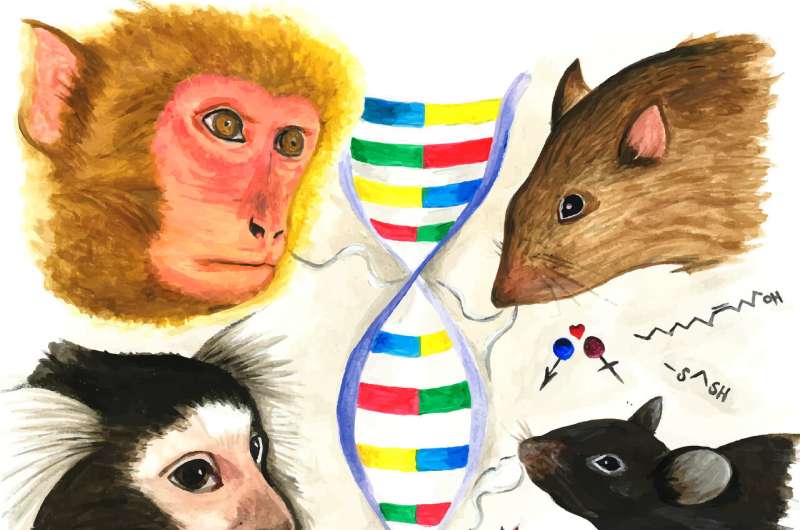August 5, 2019 report
Evidence found of evolution influencing number of neurons that sense certain odors

An international team of researchers has found evidence of evolution influencing the number of neurons that sense certain odors in mammals. In their paper published in the journal Science Advances, the group describes their genetic study of the mucosa involved in the sense of smell in several mammals and what they found.
The sense of smell is, of course, one of the five basic senses—it allows us to detect odors in the air around us. Being able to smell something helps us and other animals figure out what to eat, and in some cases, what not to eat to avoid getting sick. In this new effort, the researcher began their effort with a hypothesis—suggesting that it was likely that mammals tend to have more of the type of sensory neurons that they need to find the particular types of food they eat. To find out if this is indeed the case, they collected mucosa samples from several mammal species: mice, macaques, humans, dogs, rats and marmosets. In humans, such mucosa is not found in the nose, instead, it is located in the forehead above the nose.
In mammals, the sense of smell develops as a result of smell receptors being activated by chemicals in the air. Such receptors are in turn expressed by sensory neurons, which are located in mucosa. The nerves then send signals to the brain which describe which particular odors are being smelled. To learn more about smell receptors in mammals, the team carried out mRNA analysis of each of the samples they obtained to find out which genes were switched on when a mammal was in the process of smelling something.
The researchers report that they found the expression of smelling genes to be "broadly conserved" across all of the species they were studying. But they also found that the number of sensory neurons that were activated by different chemicals varied by species. They suggest that this finding is evidence of evolution playing a role in determining the abundance of smelling receptors in mammals—there tend to more of the types tied to the foods a given species eats.
More information: Luis R. Saraiva et al. A transcriptomic atlas of mammalian olfactory mucosae reveals an evolutionary influence on food odor detection in humans, Science Advances (2019). DOI: 10.1126/sciadv.aax0396
Journal information: Science Advances
© 2019 Science X Network


















